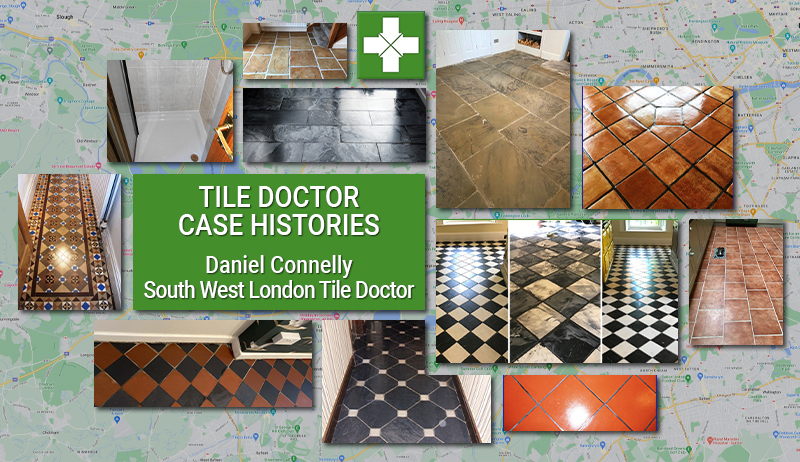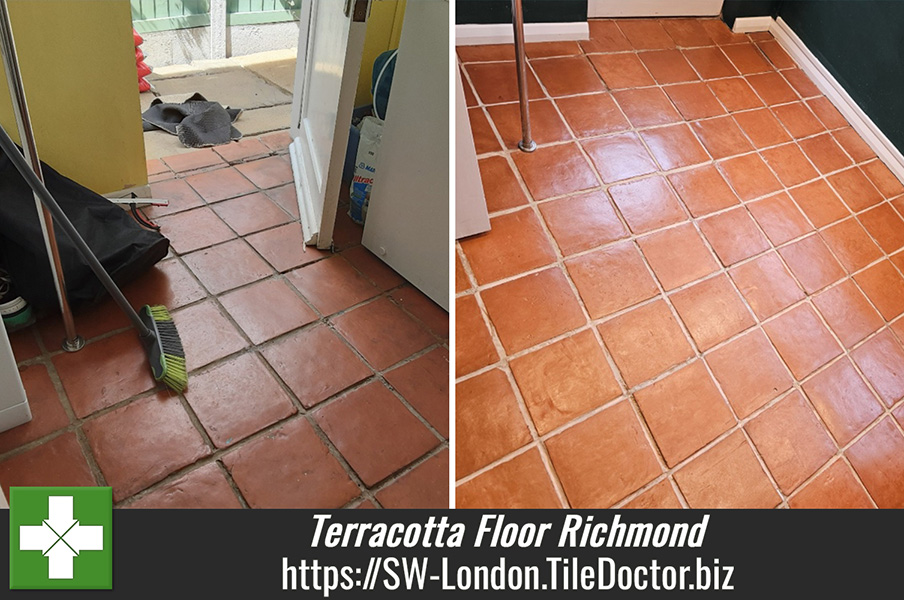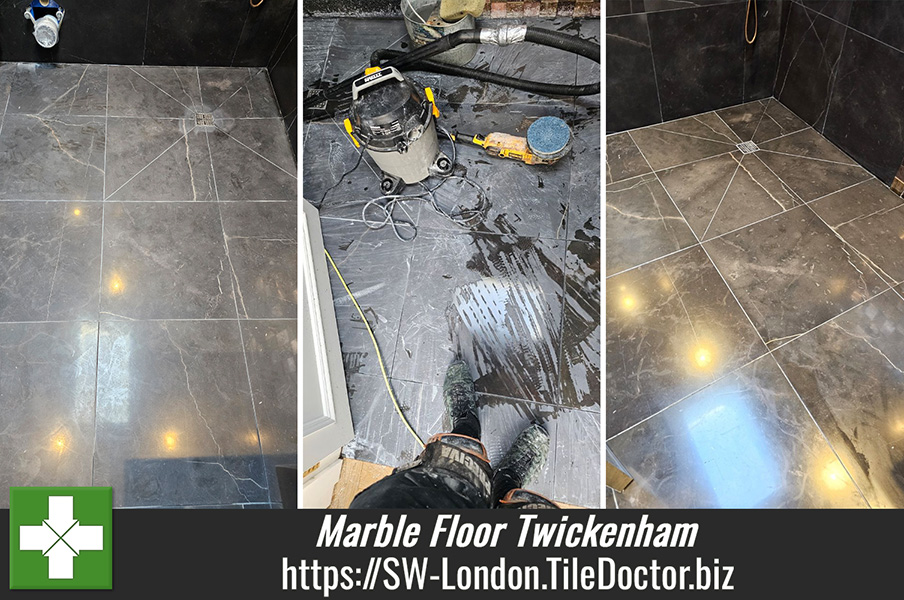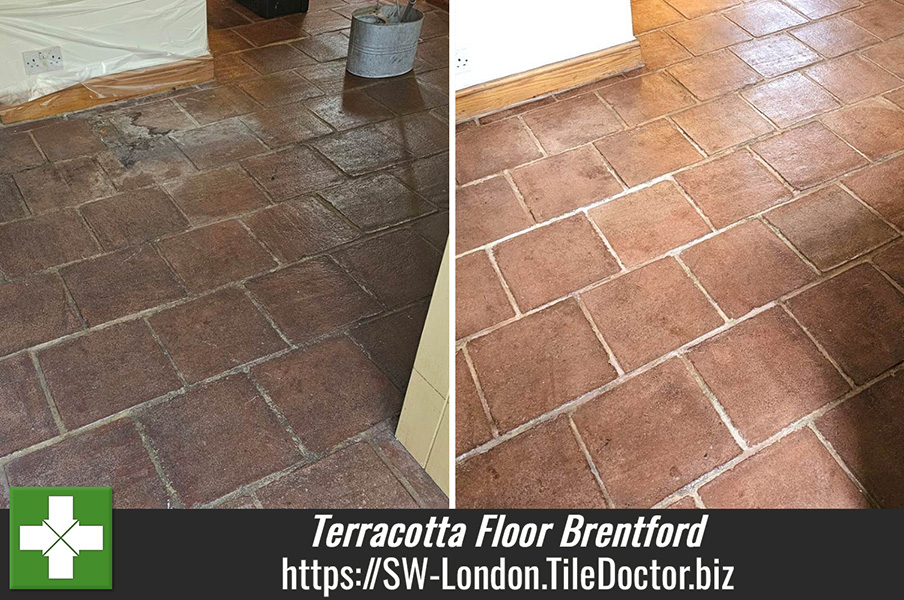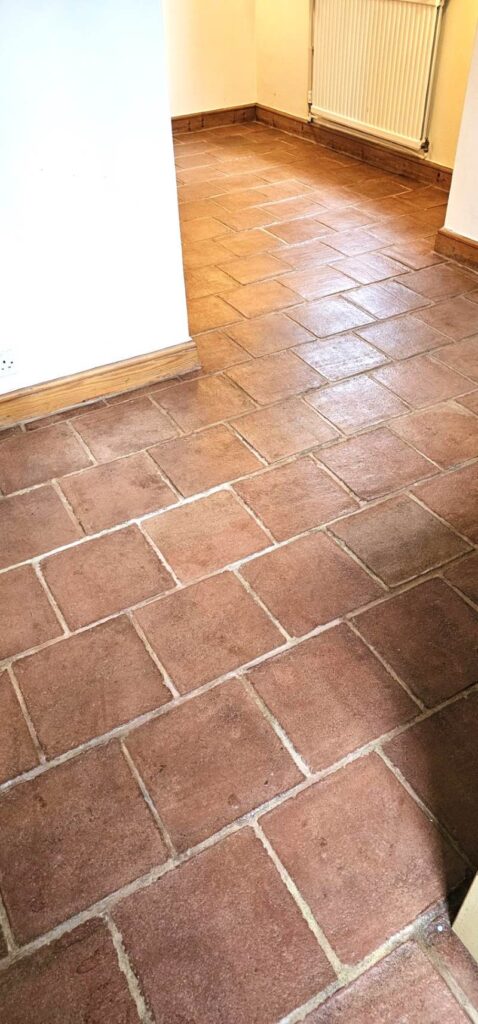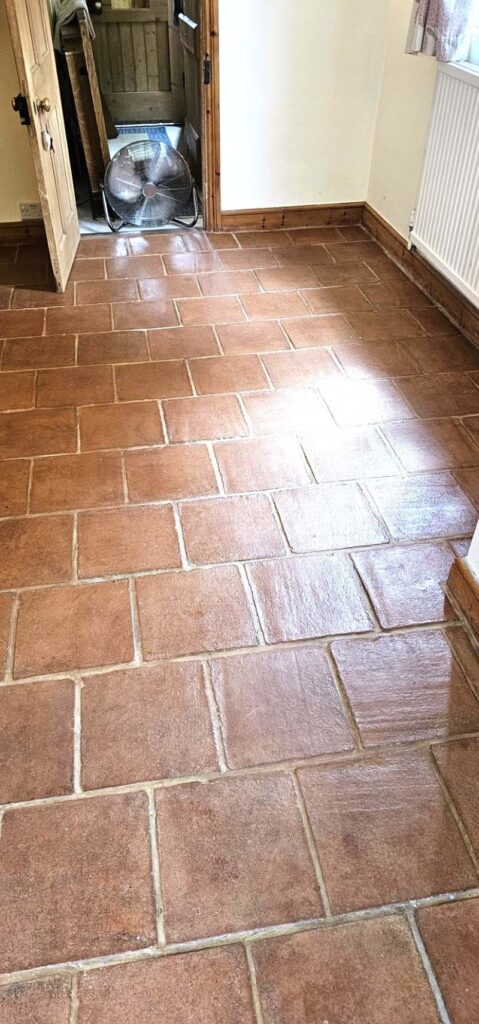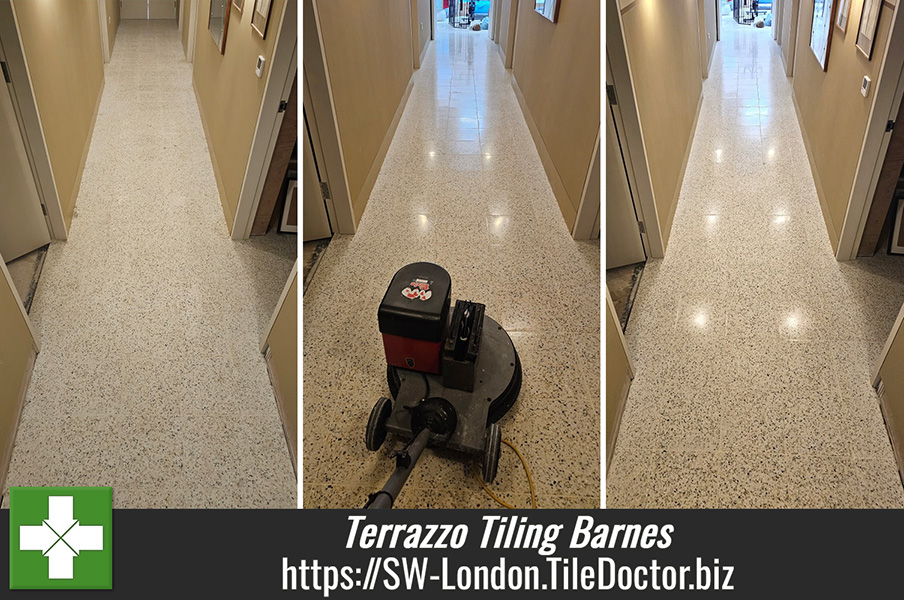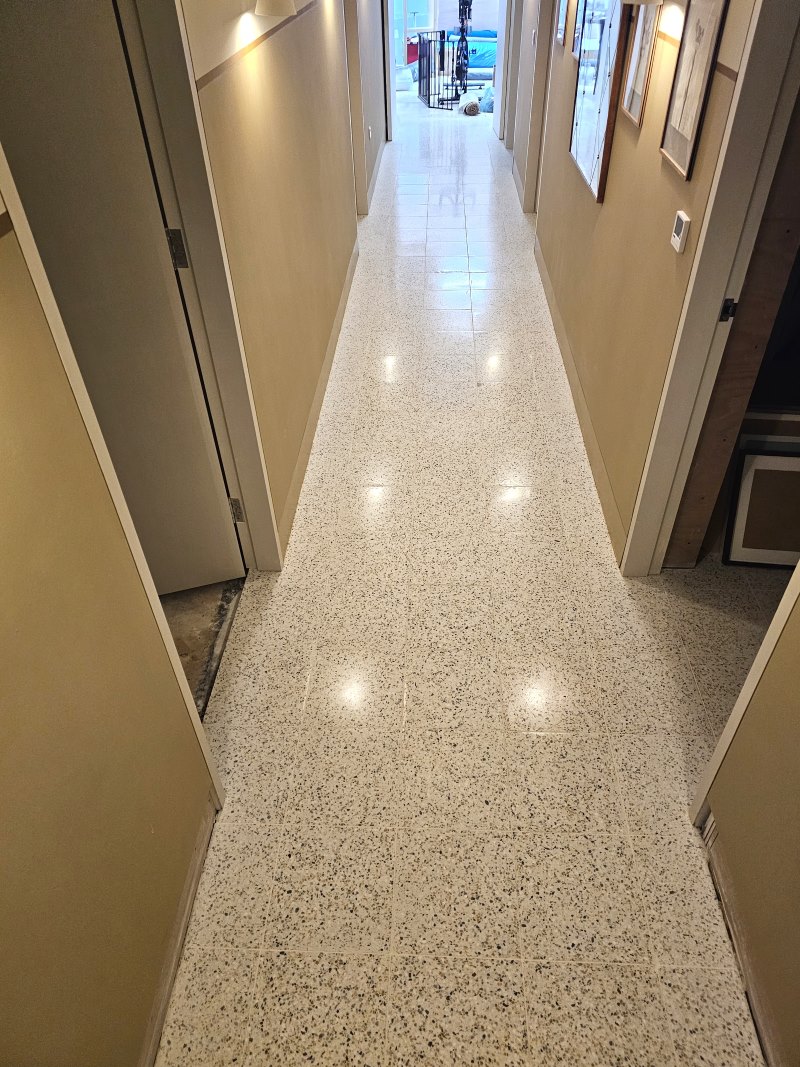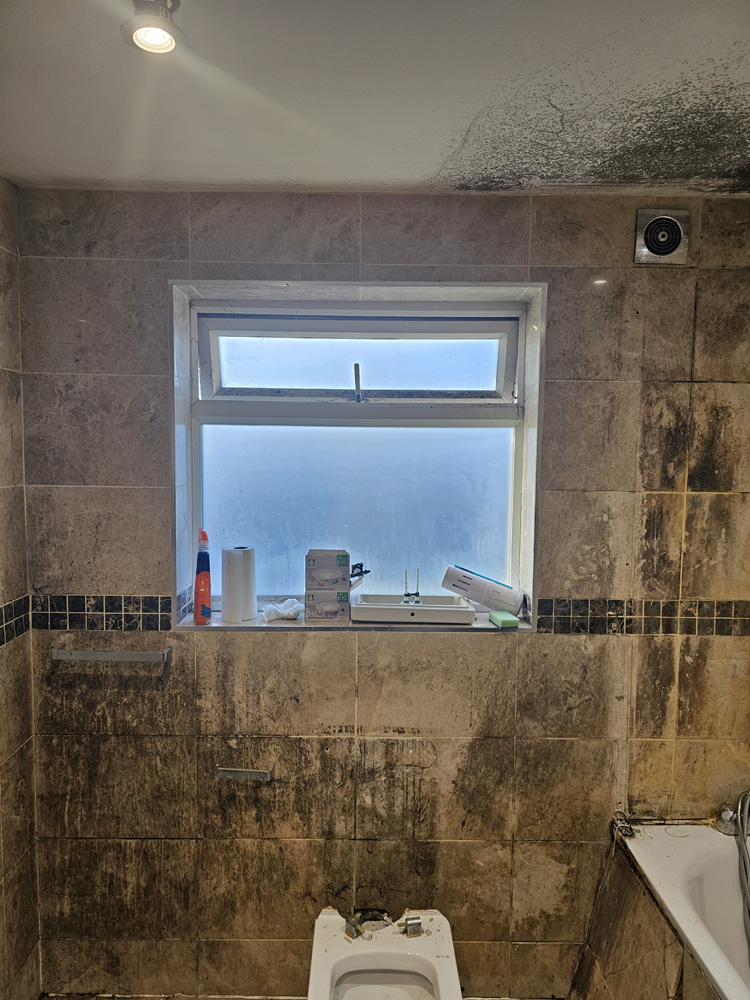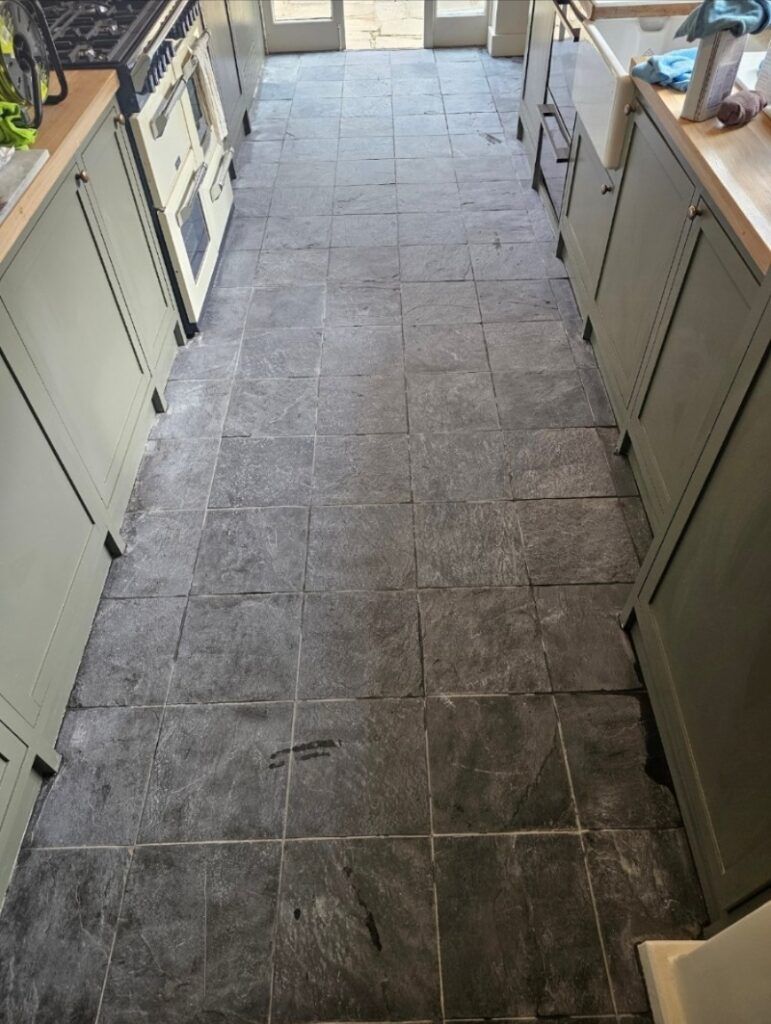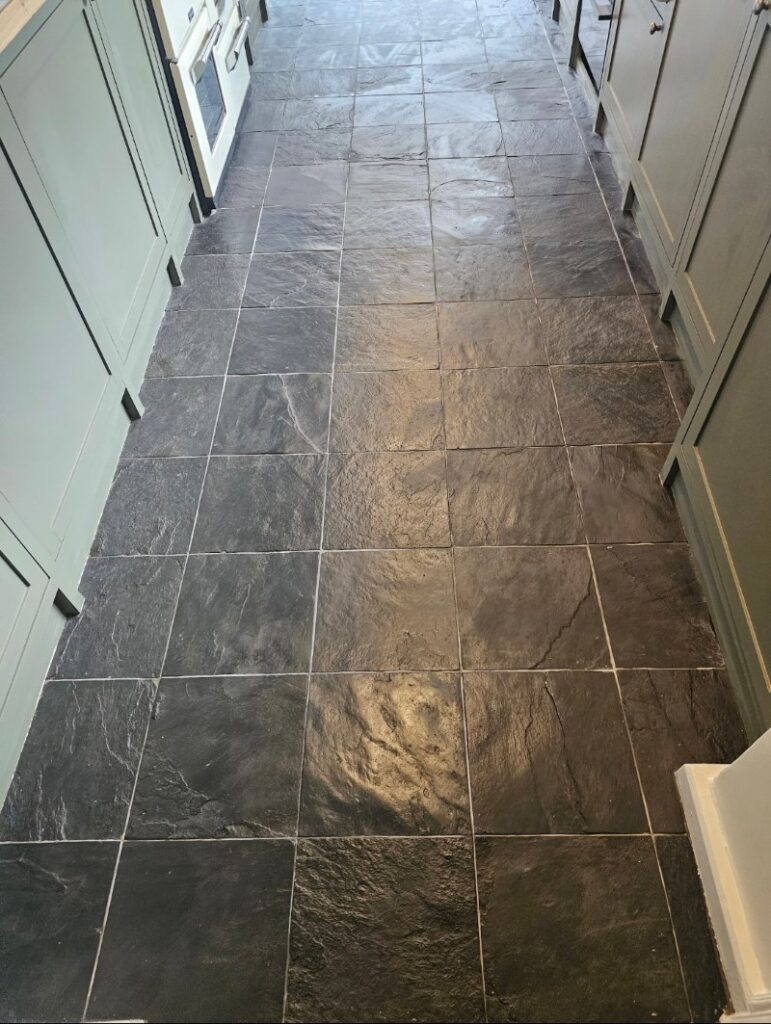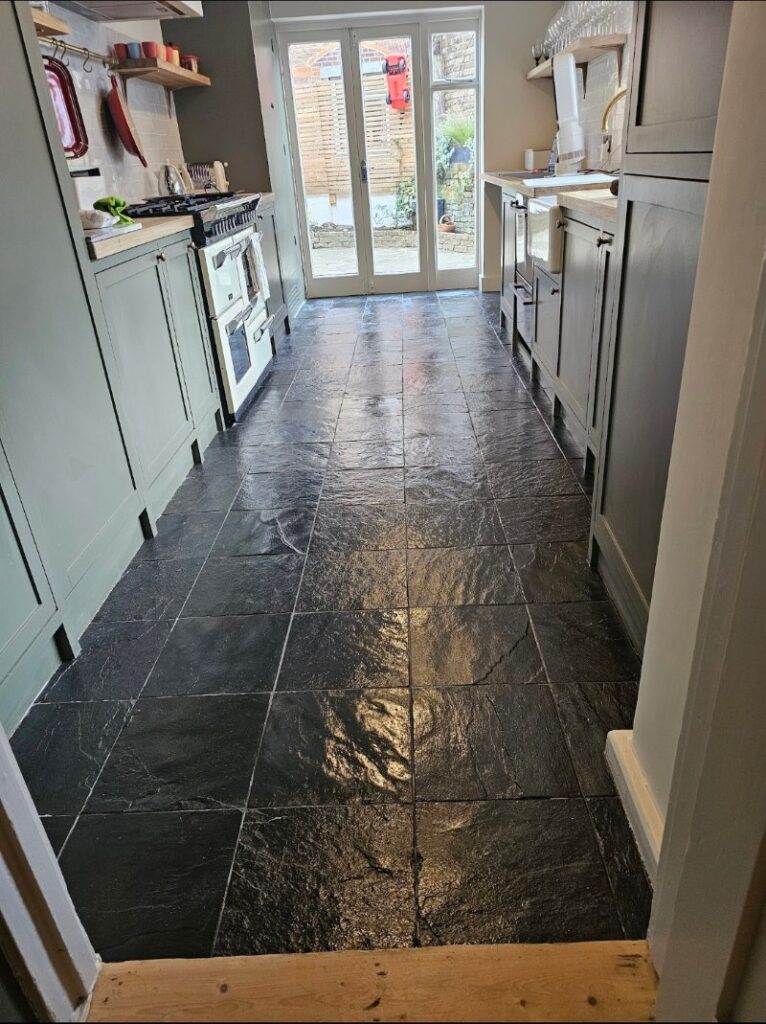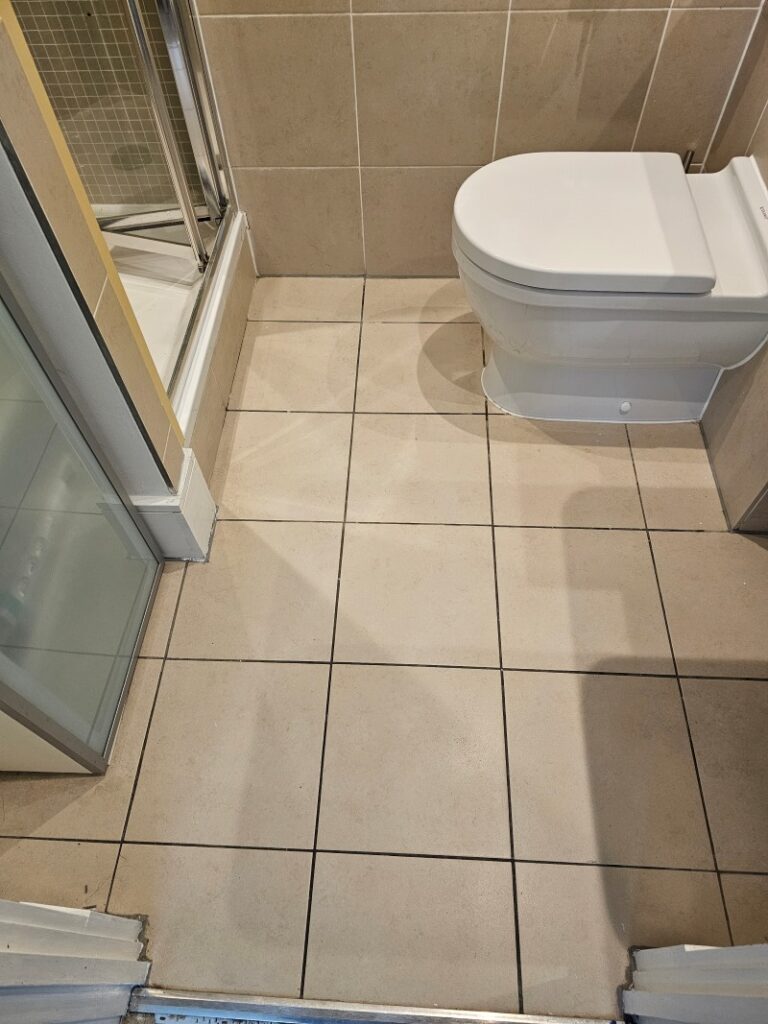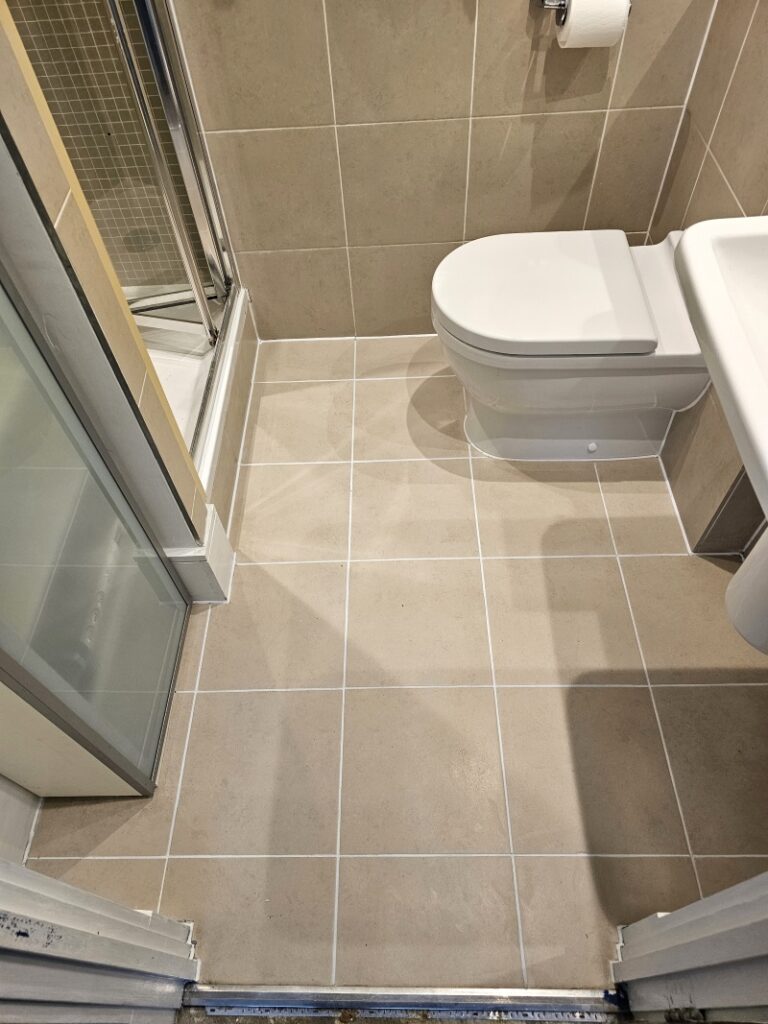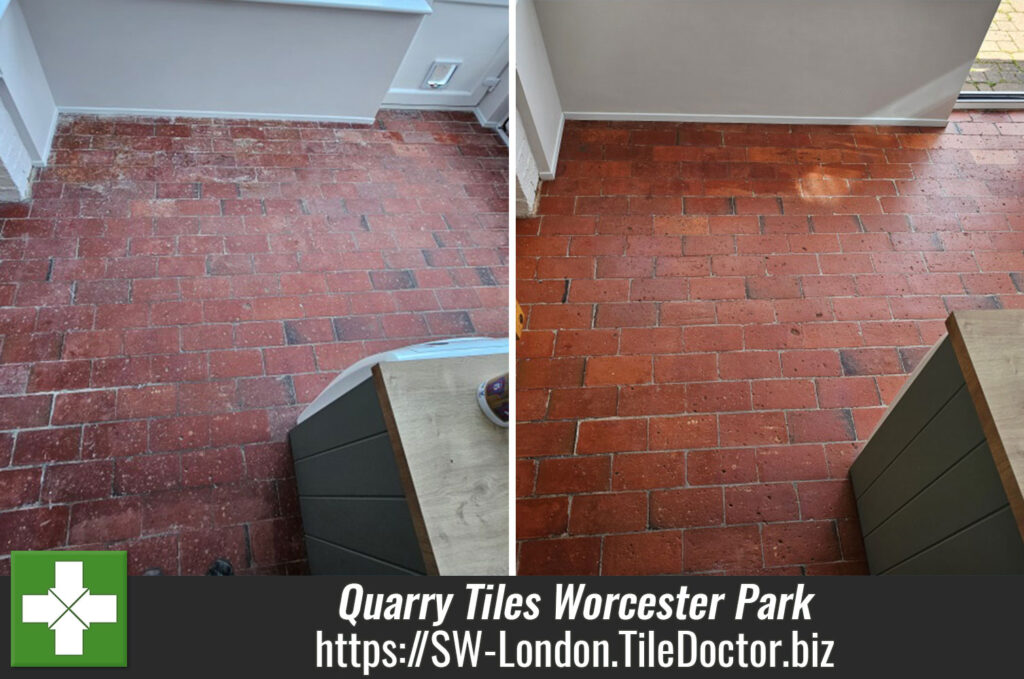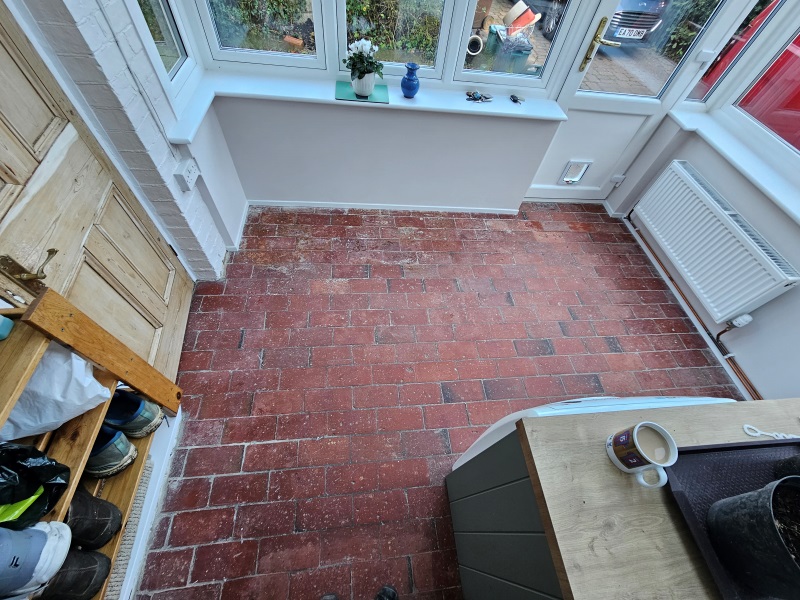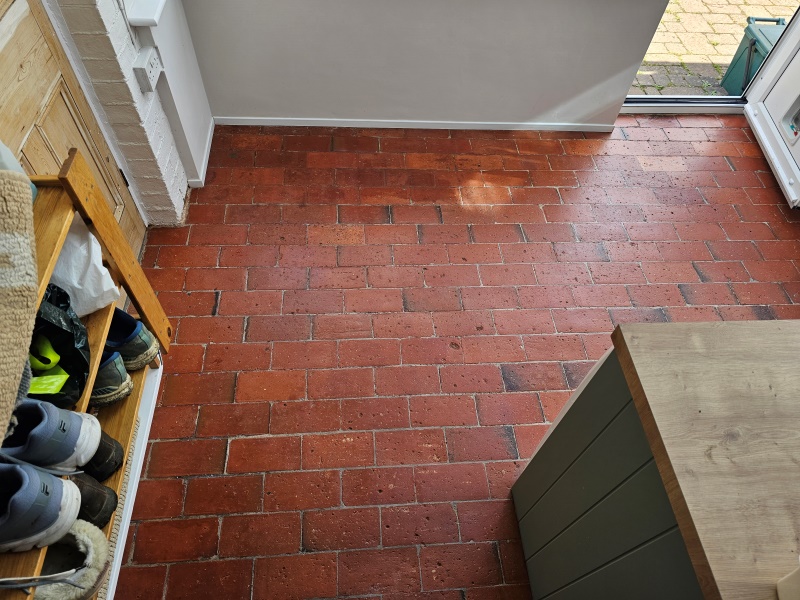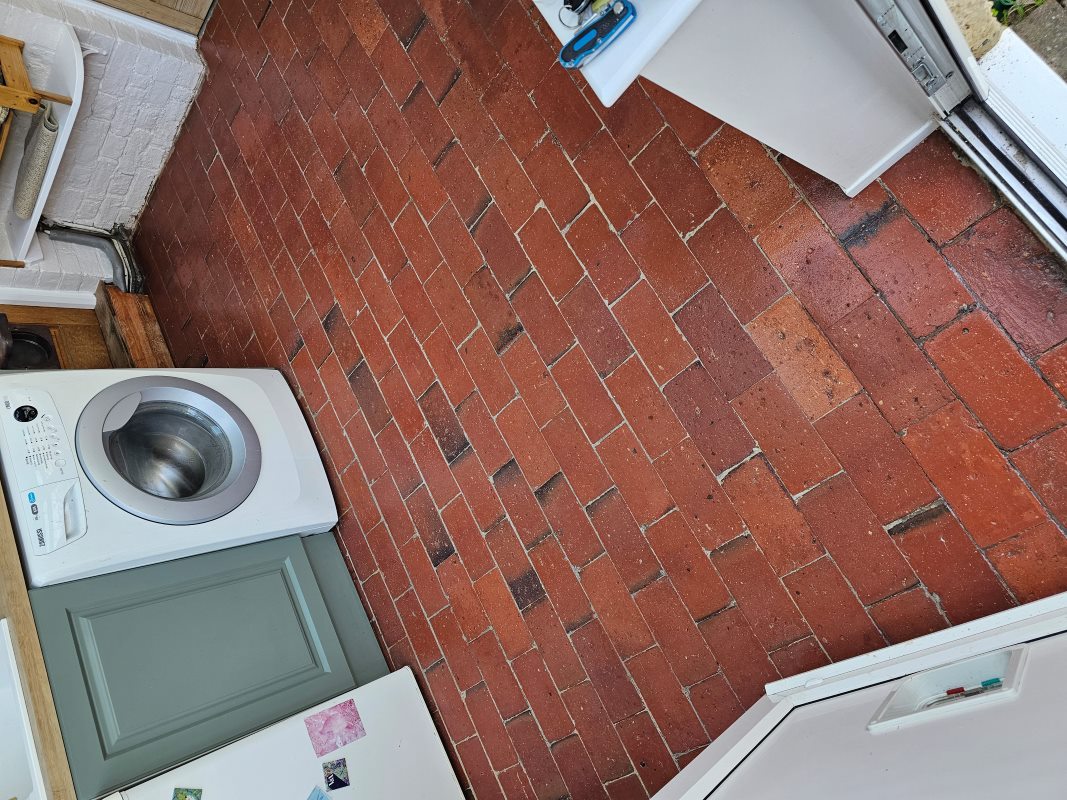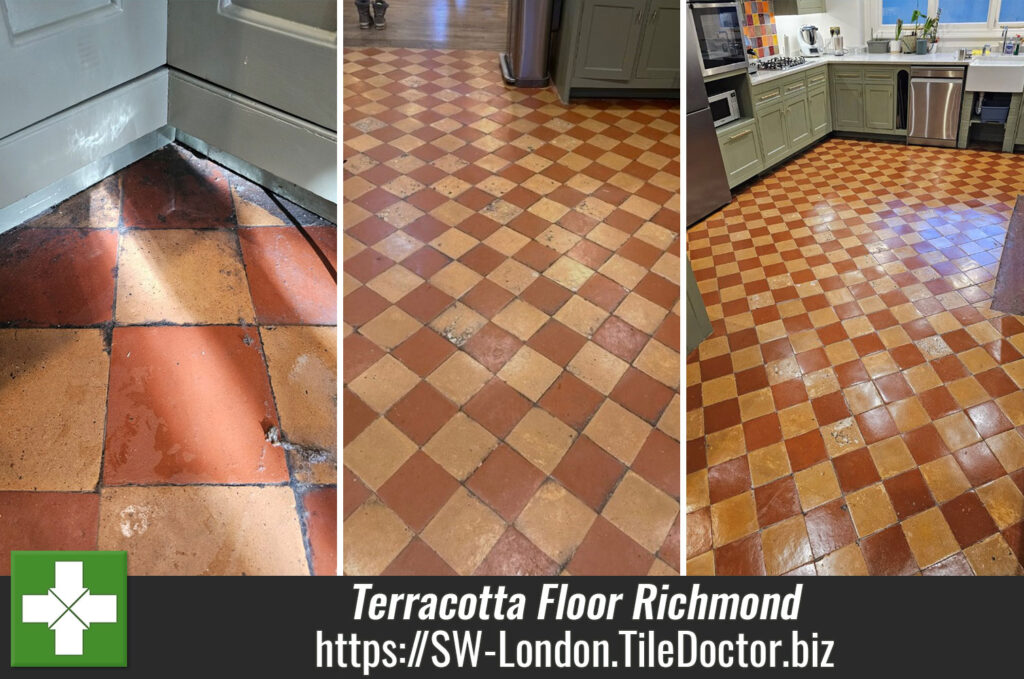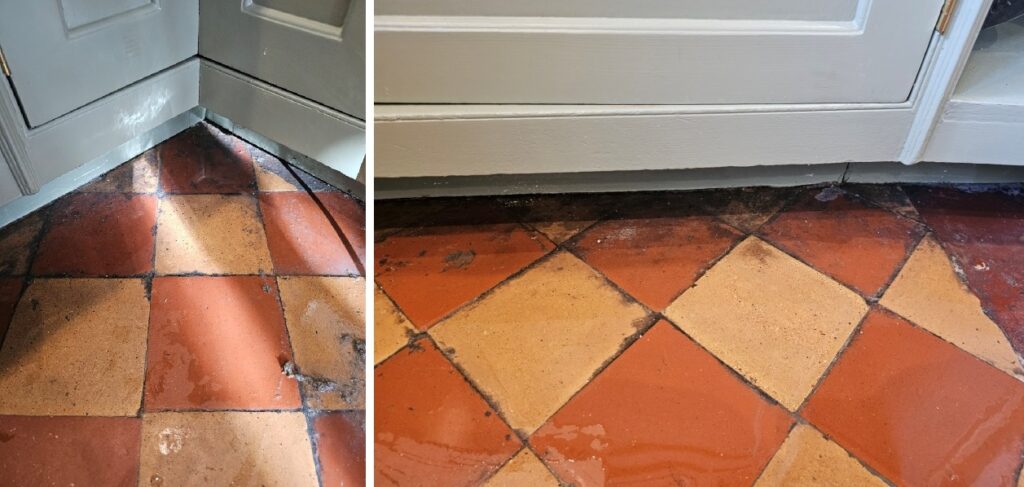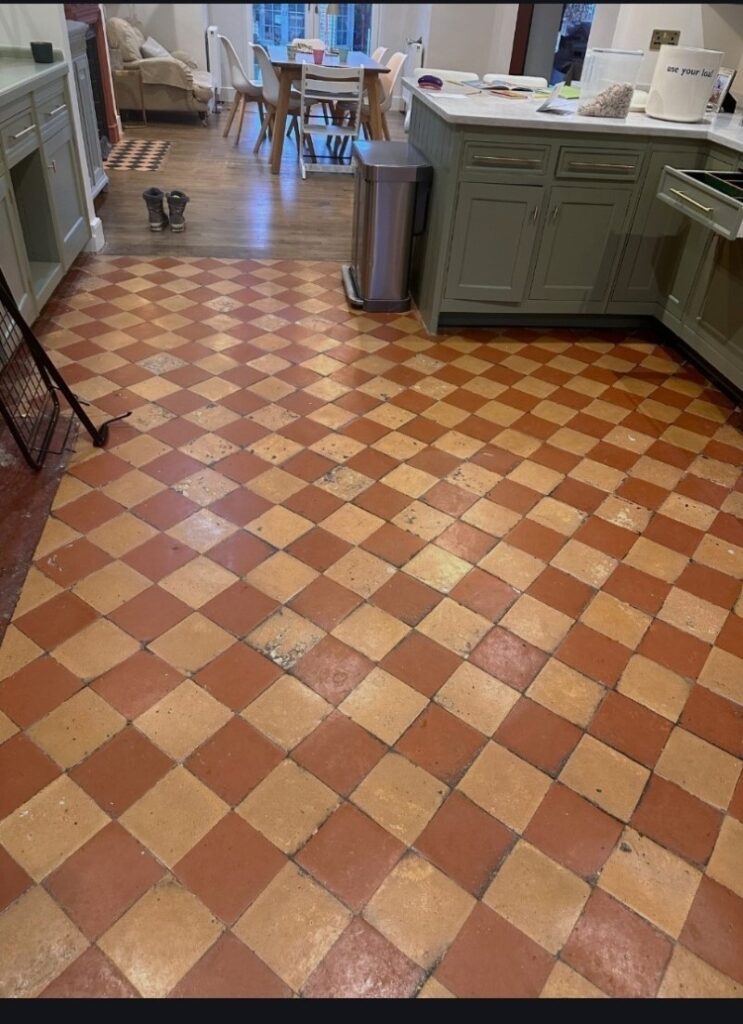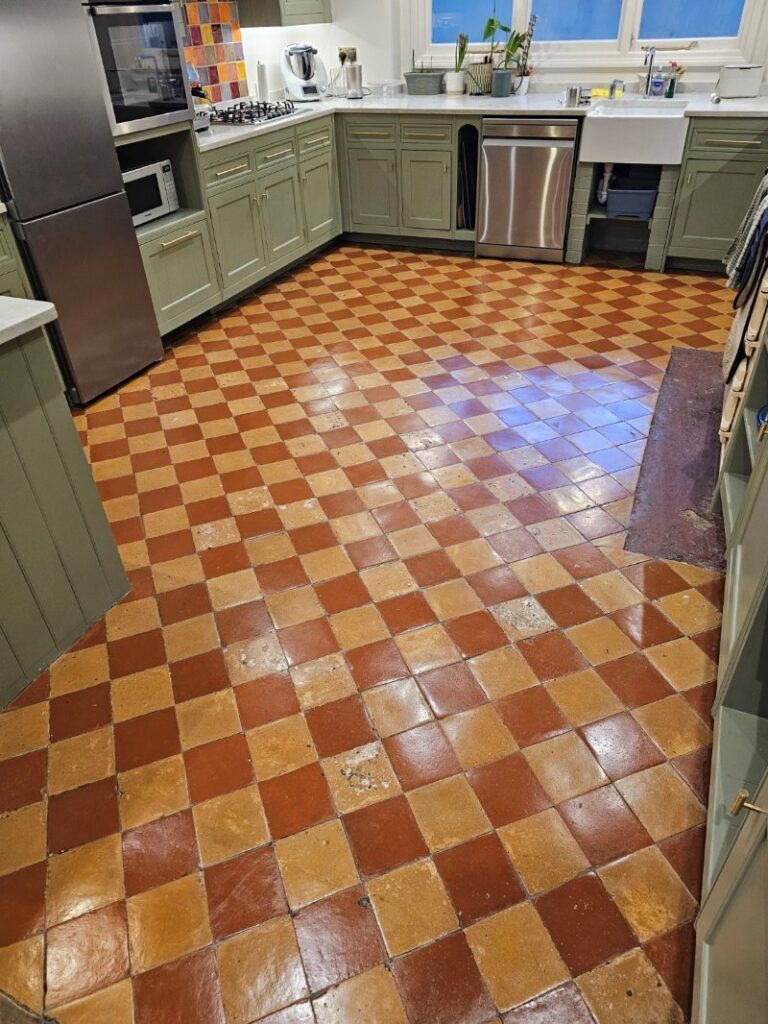Terracotta Tiled Utility Room Floor Deep Cleaned and Sealed in Richmond
These are terracotta tiles installed 28 years ago in the utility room of a property in Richmond KT2. A new owner moved into the property a year ago and were going to pull the tiles up to replace with vinyl. They assumed the tiles were too far gone for restoration but decided to give me a call first to see if there was anything that could be done.
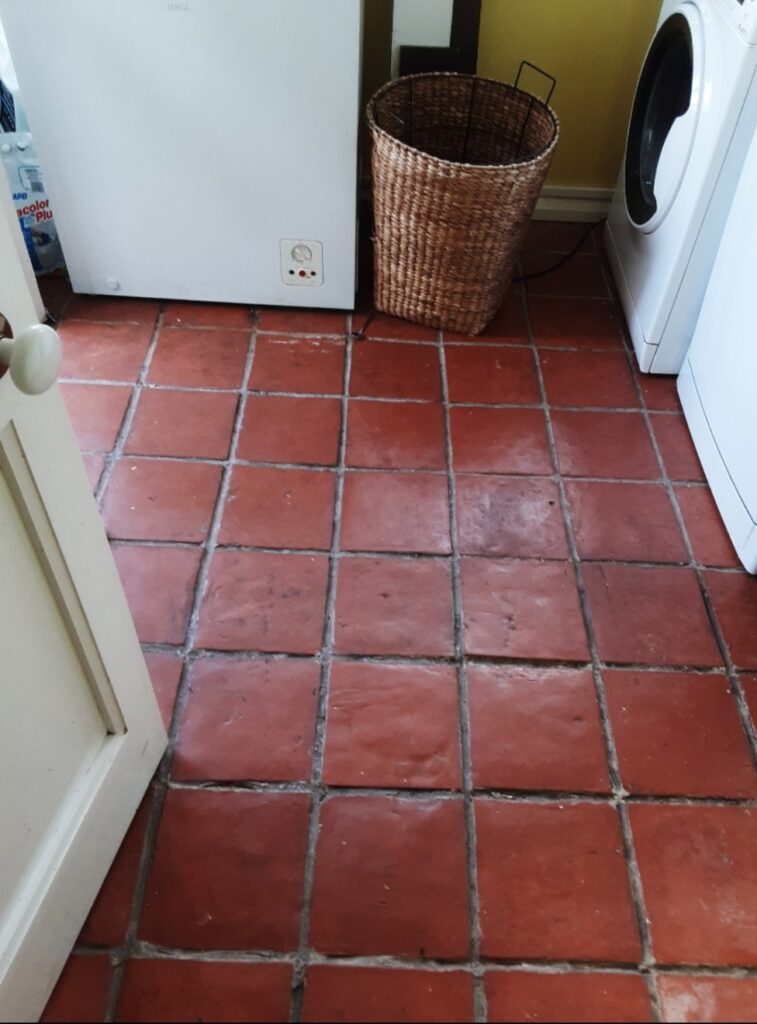
I visited the property and conducted some tests and established that we could in fact work with the tiles. They were dark with dirt, but I was confident they would come up really well and provided the owners with a quote to deep clean the tiles and then re-seal to protect them.
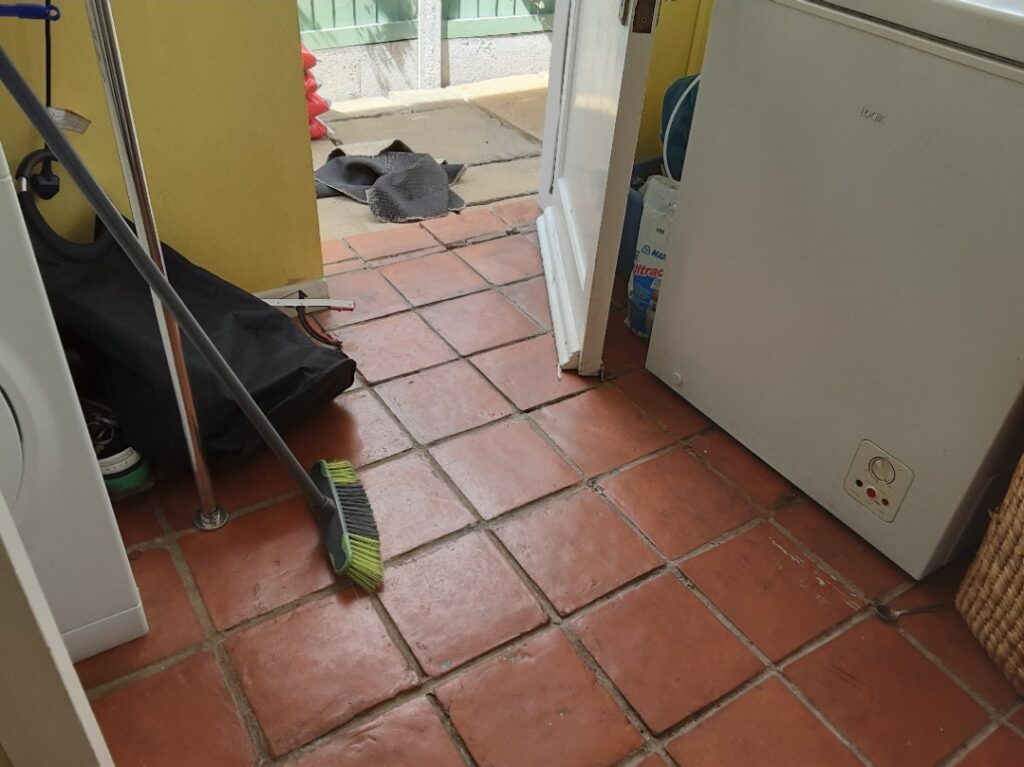
Deep Cleaning a Terracotta Tiled Utility Floor
The work began by deep cleaning the tiles and removing what was left of the original sealer. It was clear from the start that multiple coats of a protective coating of some kind had been applied and as this broke down with use, dirt had become deeply ingrained into this sealer and not the tile. Deep cleaning of the tiles could only commence once this coating was gone so I started by mopping Tile Doctor Remove and Go stripper diluted with water onto the floor and leaving it to soak in for fifteen minutes. The solution was then agitated with a brush and and the process repeated several times.
It was a small area, so a DeWalt handheld rotary machine fitted with an 80-grit carbide brush was then used to scrub the floor in an attempt to take the sealer off. I soon realised that due to the numerous coats that had been applied the process would need repeating several times. Each application and scrub improving the state of the tiles gradually giving me confidence that I was in fact on the right path.
Once the sealer had been removed, I decided to use Tile Doctor Heavy Build-Up Remover to help with the cleaning process. This was applied to the Terracotta and Grout and then left to soak in for twenty minutes before scrubbing the floor with the Dewalt machine fitted with the carbide brush. The resultant slurry was vacuumed away with a Hyundai wet vacuum. The work was done this way in small sections to ensure the Terracotta was as clean as possible.
Once I was satisfied, the tile and grout was cleaned to its best possible condition the floor was given an acid rinse using Tile Doctor Grout Clean-up. The acid in this product does several things including dissolving any salts that may be in the tiles, further cleaning up the tiles and neutralising the PH level of the floor following the use of alkaline cleaners. After being brushed into the tiles and left for five minutes the solution was removed with the wet vacuum and the floor mopped lightly with clean water.
Terracotta is made of clay, which is very porous, so I decided it was best to leave the floor over the weekend to dry out. This allows for any water vapour to completely evaporate before sealing and allowed time for any remaining salt issues to appear so they could be dealt with before sealing.
Sealing a Terracotta Tiled Utility
On my return, I sealed the floor using Tile Doctor Seal and Go Extra and a paint pad, it took four applications of the sealer before I achieved the correct level and resulted in a fully sealed surface.
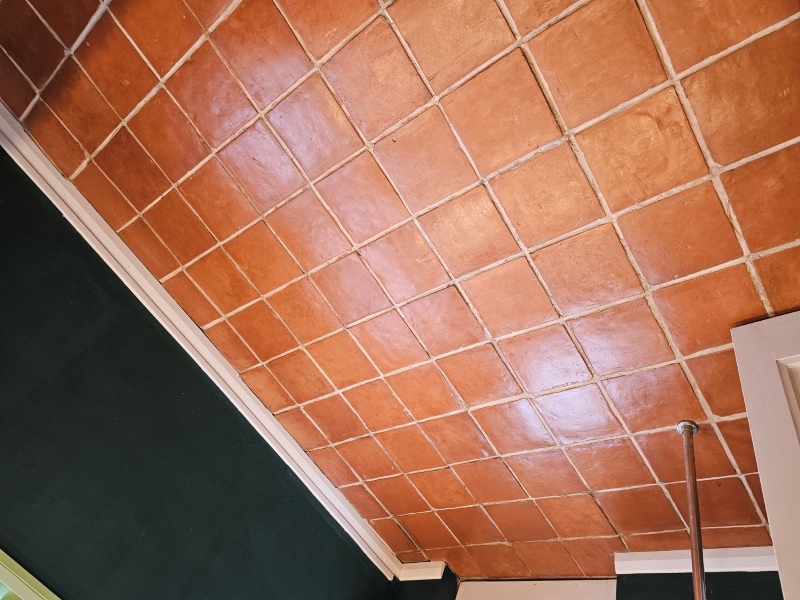
The result was a completely transformed floor; the dark and dirty red colour had gone and was replaced with a fresh orange Terracotta. My client was delighted with the result and left the following feedback:
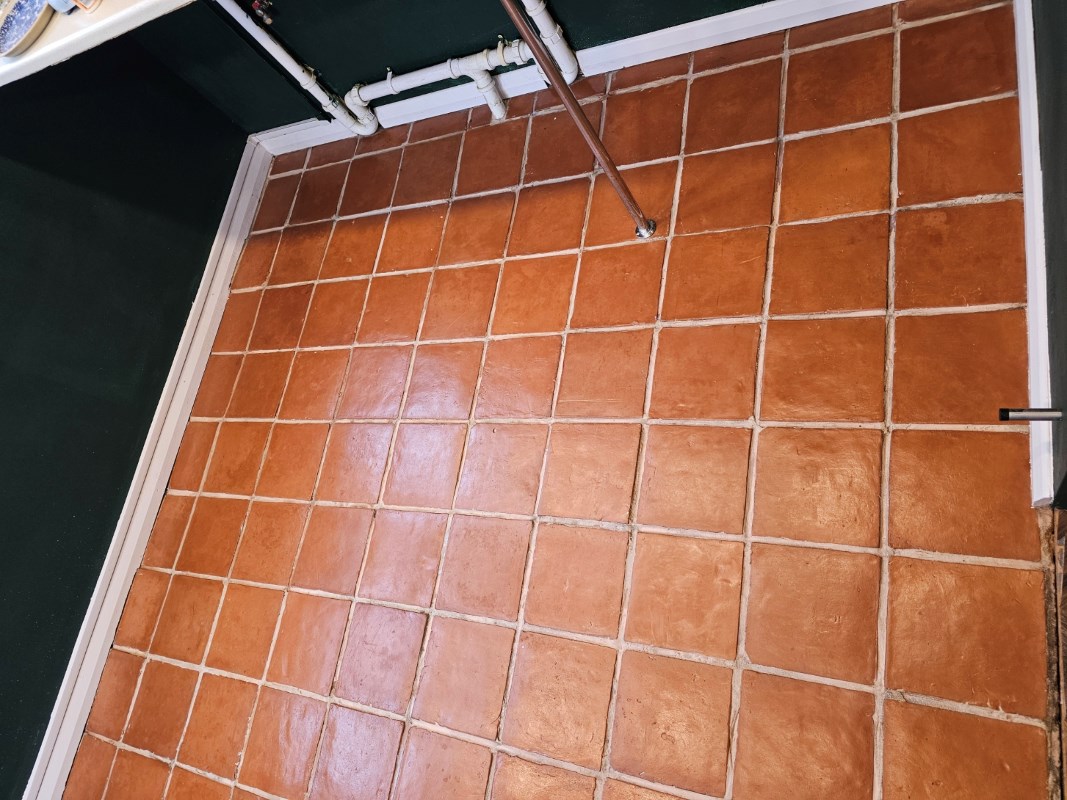 |
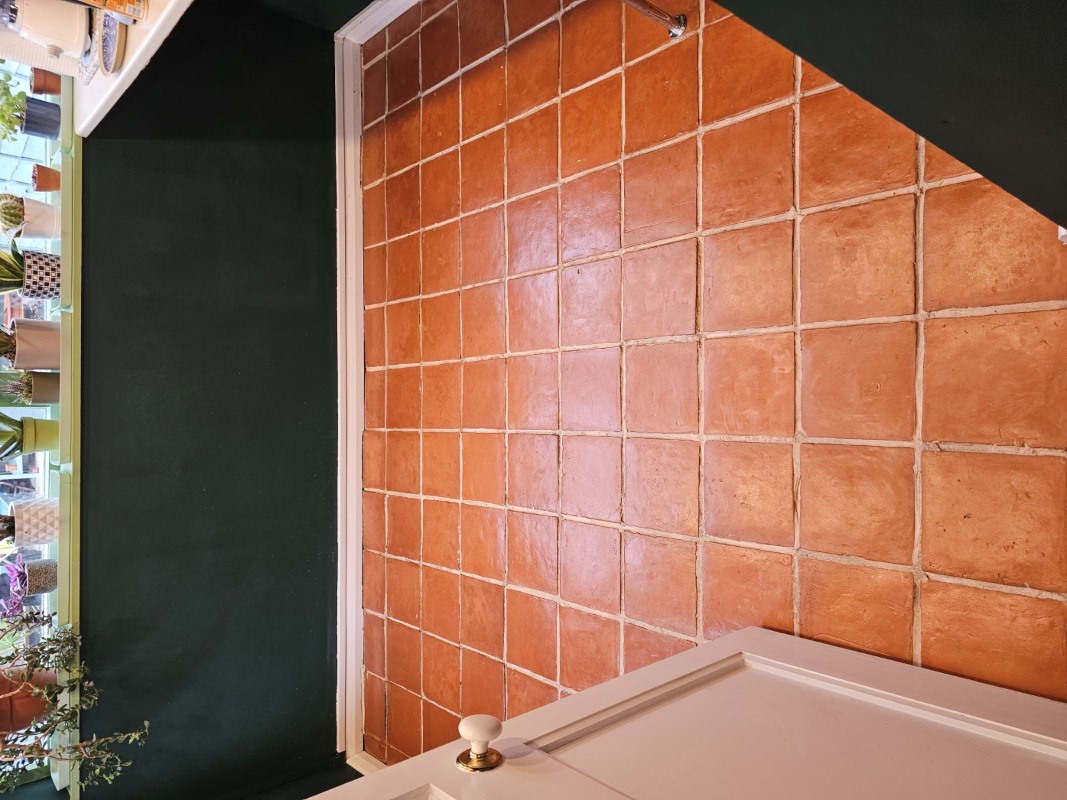 |
Before leaving I took time to explain the importance of using Tile Doctor Neutral Tile Cleaner to maintain the floor going forward. This is a mild but effective Tile and Grout cleaner that won’t impact the sealer.
Professional Restoration of a Terracotta Tiled Utility Floor in Southwest London
Terracotta Tiled Utility Room Floor Deep Cleaned and Sealed in Richmond Read More »

